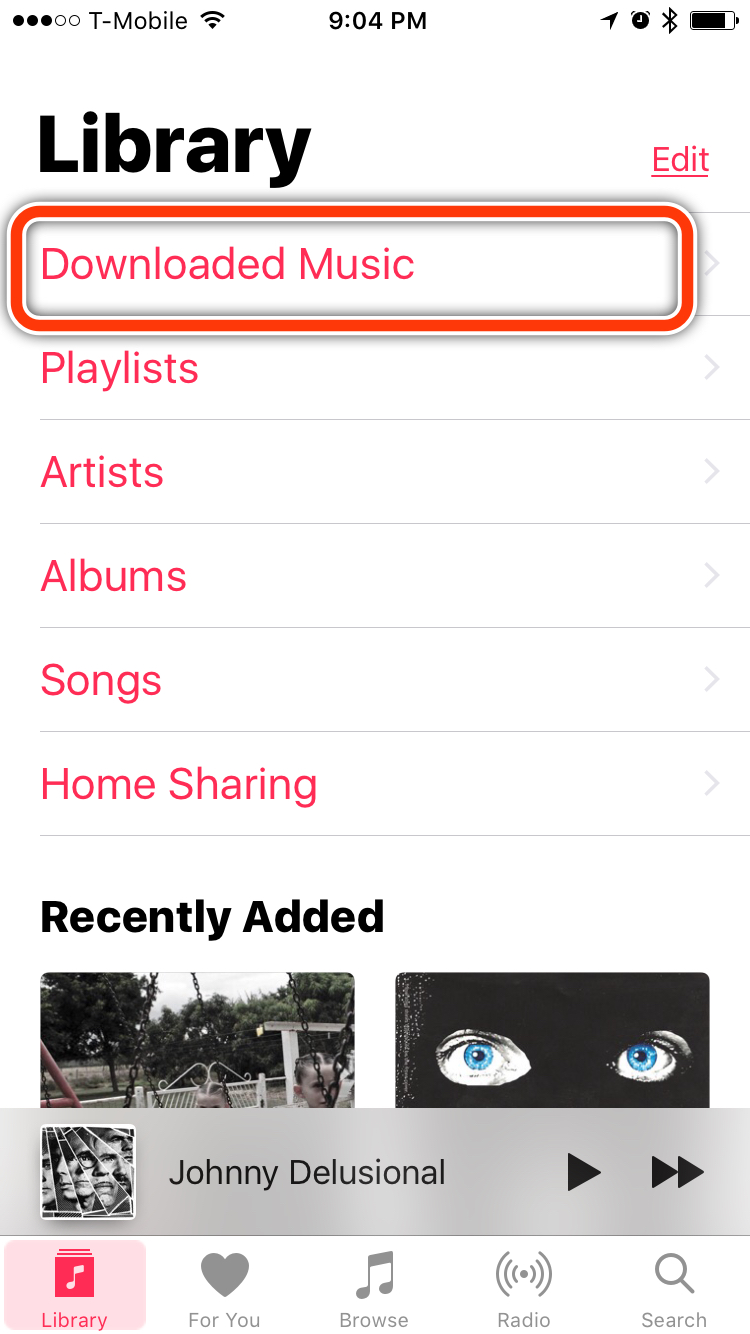iOS 10 Makes Non-Streaming Music a Second-Class Citizen
The release of iOS 10 is just around the corner. I’ve been running the public beta on my phone for a few weeks, and I think it’s going to be an incredible update. It’ll be even better once I can run it with watchOS 3, but that’s neither here nor there. All the UI tweaks, features, and simple improvements have made using my iPhone so much easier and more pleasant, with one exception.
That is: the Music app.
I won’t deny that the iOS 10 Music app is a huge step up from the convoluted mess that was iOS 9.3’s Music app. I can actually figure out how to navigate, control the playback queue, and find my music. The new interface is also a lot more visually appealing. I’m a big fan of the new, bold San Francisco font used for section headers. It looks and it works great, though it’s not likely to sway me back from Cesium any time soon.
The problem I have with the Music app can be summarized in one screenshot. I have highlighted the offending feature, in case you missed it.

If I want to view only my locally stored, downloaded music, there is now a separate menu option. For everything iOS 9.3’s Music app got wrong, and boy did it get a lot wrong, there was at least a simple toggle that would hide all my cloud and iTunes purchases not stored on my phone. It didn’t work all that often, but at least it was there. Apple showed they cared, just a little, about us legacy luddites who still synchronized music to our phones over USB like an animal. And to be honest, after the last time I tried Apple’s cloud music solutions, I’m going to stick with syncing until Apple takes it away.
Replacing the “Downloaded Music†toggle with a menu option means there is now an additional step between me and getting a view into the music I keep on my phone. It’s additional friction, and it renders the music synced and stored on our devices to second-class citizen status. Showing me all the artists and albums I bought on iTunes, even if I don’t have them on my device, is not a benefit. There is a reason I didn’t sync those songs to my phone. Limited space forces me to keep only a subset of my library, the music I know I’ll want to listen to most often. This is fine. If I want to listen to something I don’t normally keep on my phone, I’ll sync it.
And before you ask, yes, I already filed a Feedback report.
I think it’s fine for Apple to create a Music app that puts streaming and the cloud first. This is the future, and how most of Apple’s users listen to their music. Fine. It’s a future I want no part of, until they drag me there, kicking and screaming, but I admit it’s the future. That doesn’t mean the streaming and cloud first Music app needs to leave local music users as second class citizens. A toggle is a simple way to streamline and keep the iOS Music experience pleasant for users who don’t stream or have poor connectivity. You can’t stream music in a subway tunnel with no cellular or wi-fi connection. And let’s not forget those poor iPod Touch users.
You might think I’m just complaining about a zeroth-world problem, and I might be. Despite it, music is something I’m passionate about. It’s a huge part of my life. My music listening habits are strange and idiosyncratic in an age where everything is streaming, but they’re mine. And I know I’m not alone. Just make local music a toggle again, Apple. It’s not hard—you already did it once.